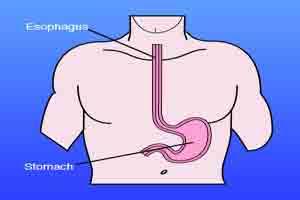- Home
- Editorial
- News
- Practice Guidelines
- Anesthesiology Guidelines
- Cancer Guidelines
- Cardiac Sciences Guidelines
- Critical Care Guidelines
- Dentistry Guidelines
- Dermatology Guidelines
- Diabetes and Endo Guidelines
- Diagnostics Guidelines
- ENT Guidelines
- Featured Practice Guidelines
- Gastroenterology Guidelines
- Geriatrics Guidelines
- Medicine Guidelines
- Nephrology Guidelines
- Neurosciences Guidelines
- Obs and Gynae Guidelines
- Ophthalmology Guidelines
- Orthopaedics Guidelines
- Paediatrics Guidelines
- Psychiatry Guidelines
- Pulmonology Guidelines
- Radiology Guidelines
- Surgery Guidelines
- Urology Guidelines
Computer-aided system accurately detects neoplasia in Barrett's esophagus

Netherlands: A deep-learning computer-aided system (CAD) is suitable for primary detection of neoplasia in patients with Barrett's esophagus (BE), a recent study published in the journal Gastroenterology has found. This may open the door to the early detection of high-risk lesions without resorting to biopsy.
According to the study, the system was able to detect neoplasia with high accuracy and near-perfect delineation performance. It achieved greater accuracy in primary detection than non-specialized endoscopists.
Barrett’s esophagus is a condition where the cells of the esophagus (gullet) grow abnormally. Barrett’s esophagus is not cancer, but it can develop into cancer in a small number of people. Gastro-oesophageal reflux is one of the main risk factors for Barrett’s esophagus, in which a portion of the esophagus that is usually lined with squamous epithelium undergoes metaplastic change to become columnar mucosa.
Jacques Bergman, Amsterdam University Medical Center in the Netherlands, and colleagues aimed to develop and validate a deep-learning computer-aided detection (CAD) system, suitable for use in real-time in clinical practice, to improve endoscopic detection of early neoplasia in patients with Barrett’s esophagus.
Read Also: Novel swallowable balloon device to detect Barrett’s Esophagus cleared by FDA
The researchers developed a hybrid ResNet-UNet model CAD system using 5 independent endoscopy datasets. Pre-training was performed using 494,364 labeled endoscopic images collected from all intestinal segments. 1704 unique esophageal high-resolution images of rigorously confirmed early-stage neoplasia were used from patients with BE, and non-dysplastic BE derived from 669 patients.
System performance was assessed using datasets 4 and 5. Dataset 5 was also scored by 53 general endoscopists with a wide range of experience from 4 countries to benchmark CAD system performance. Coupled with histopathology findings, scoring of images that contained early-stage neoplasia in datasets 2–5 were delineated in detail for neoplasm position and extent by multiple experts whose evaluations served as the ground truth for segmentation.
Key findings of the study include:
- The CAD system classified images as containing neoplasms or non-dysplastic BE with 89% accuracy, 90% sensitivity, and 88% specificity (dataset 4, 80 patients and images).
- In dataset 5 (80 patients and images) values for the CAD system vs those of the general endoscopists were 88% vs 73% accuracy, 93% vs 72% sensitivity, and 83% vs 74% specificity.
- The CAD system achieved higher accuracy than any of the individual 53 non-expert endoscopists, with comparable delineation performance.
- CAD delineations of the area of neoplasm overlapped with those from the BE experts in all detected neoplasia in datasets 4 and 5.
- The CAD system identified the optimal site for biopsy of detected neoplasia in 97% and 92% of cases (dataset 4 and 5 respectively).
Read Also: Screening and surveillance of Barrett’s esophagus: Updated ASGE guideline
"We developed, validated, and benchmarked a deep-learning computer-aided system for primary detection of neoplasia in patients with BE. The system detected neoplasia with high accuracy and near-perfect delineation performance," wrote the authors.
The study, "Deep-Learning System Detects Neoplasia in Patients With Barrett’s Esophagus With Higher Accuracy Than Endoscopists in a Multi-Step Training and Validation Study with Benchmarking," is published in the journal Gastroenterology.

Disclaimer: This site is primarily intended for healthcare professionals. Any content/information on this website does not replace the advice of medical and/or health professionals and should not be construed as medical/diagnostic advice/endorsement or prescription. Use of this site is subject to our terms of use, privacy policy, advertisement policy. © 2020 Minerva Medical Treatment Pvt Ltd